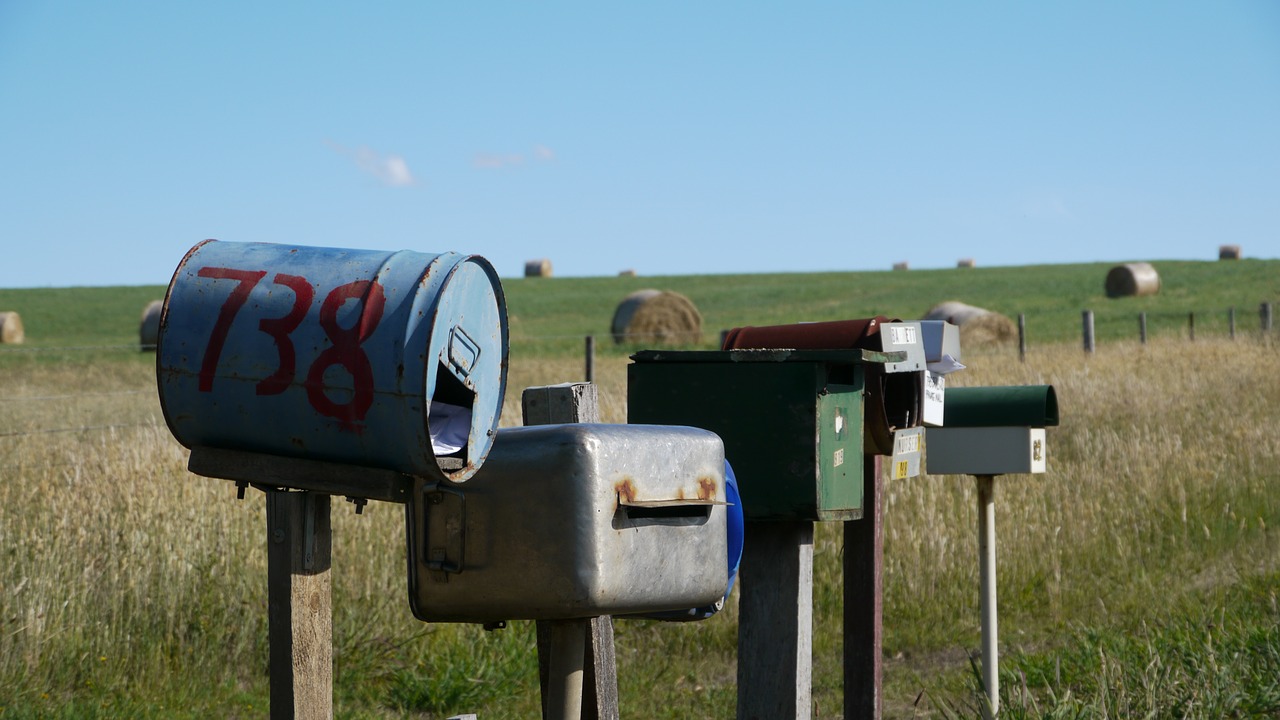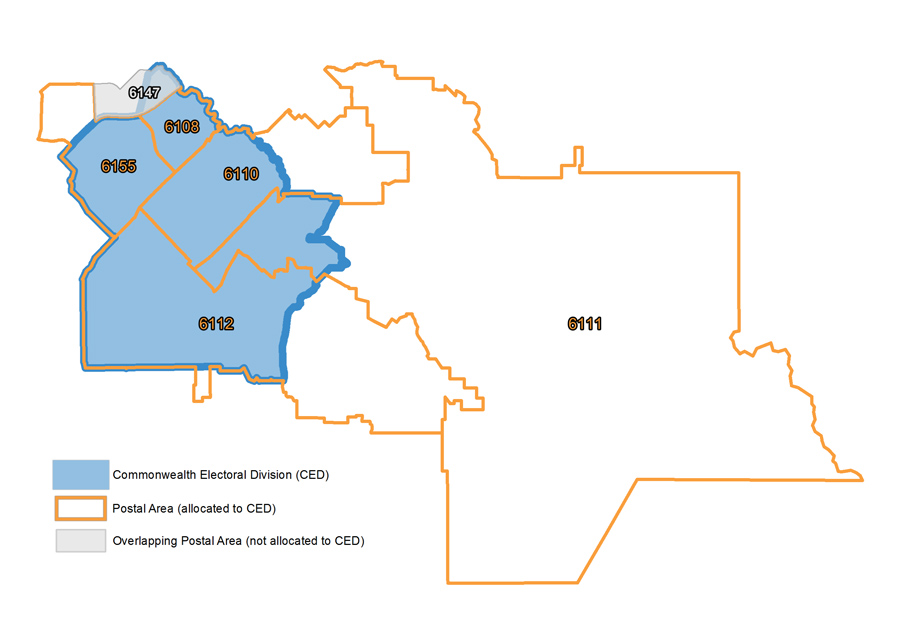Updated 28 April 2021
PDF version [488 KB]
Christopher
Giuliano
Statistics and Mapping
This Quick Guide explains how data available at postcode level can
be converted to Commonwealth Electoral Divisions.

MartinaFotos/Pixabay.com
Postcodes are a four digit number used by Australia Post
to assist with mail delivery. They form part of an address, which can
potentially be used to produce administrative data (such as ATO data which
based on taxpayers’ addresses). Postcodes however, have changeable,
non-contiguous, complex boundaries, which makes them difficult to use for other
purposes, such as analysing data at a state or sub-state level. The best
publicly-available approximation of postcodes is Postal Areas (POAs), as
defined by the Australian Bureau of Statistics (ABS). This Quick Guide assists
researchers to go one step further by providing a correspondence of POAs to the
Commonwealth Electoral Division (CED)
boundaries in use at the 2019 election.
While postcodes cover most, but not all of Australia, POAs cover
the whole nation; with eight crossing state boundaries. POAs can be used to report data for small
geographic areas, or be aggregated to create larger regions, such as CEDs. This
is where a correspondence is helpful. A correspondence is a file
of spatial units (defined areas such as states, electorates, POAs and
ABS-defined statistical areas) showing the proportion of each area’s (say) population
that falls within another area—in this case, the proportion of the population
of the POA that falls within a CED. This particular correspondence includes additional codes that are not POAs, i.e. Australia Post
postcodes related to post office boxes or mail centres obtained from other sources
such as Australian Tax Office (ATO) data. In such cases the physical location
has been used to assign these additional codes to a CED.
The example on the second page shows the Division of Burt
(blue area) with POAs overlayed. Clearly not all POAs fit neatly within Burt
and this is when a correspondence is used to determine how much various POAs
are allocated to Burt, based on very small area (SA1) population data. The map shows that 6108 is the only postal area contained
wholly within Burt; all others are partially allocated to Burt in the
correspondence, as indicated by the orange outlines.
An allocation is a
simplified version of a correspondence, where whole areas are assigned to other
areas based on (usually) where the majority of the population lives. In the
Burt example, POA 6147 (shaded grey) also sits partially within Burt, but the
majority of its population is outside Burt and it is therefore wholly allocated
to another CED. Although a large area of 6111 appears to be outside of Burt,
this is mostly farmland and therefore does not contain as much population as
the area sitting within Burt. This area is therefore wholly assigned to Burt in
the allocation, but only partially in the correspondence.
Map 1: Burt Commonwealth
Electoral Division and Postal Areas

Contents of the
correspondence file
This spreadsheet (download
Excel spreadsheet here) contains four worksheets, which are summarised
below.
- Notes contains a more detailed explanation
of the construction and limitations of the Correspondence and Allocation
worksheets.
- Correspondence provides each Postal Area (POA) and
the name of the CED that it is in entirely, or, where the POA is in two or more
electorates, the proportion of the POA population that is in each electorate.
For example:
- POA 2018 spans two electorates, with
52.74 per cent of the population in Kingsford-Smith and 47.26 per cent in
Sydney.
- POA 0872 spans four electorates
across three jurisdictions—79.57 per cent of the population is in Lingiari
(Northern Territory), 12.71 per cent is in Grey (South Australia), 6.29 per
cent is in O’Connor and 1.44 per cent is in Durack (both in (Western
Australia).
- Allocation shows each POA against the CED that
has the highest proportion of the POA’s population. Taking the POA 2018
example, it would only be listed for the electorate of Kingsford-Smith, as it
has a higher proportion of the POA population than the electorate of Sydney.
Just over 80 per cent of POAs have a population entirely within a CED.
- Non-POA
postcodes list
postcodes that are not in the list of ABS POAs, such as post office boxes.
Further notes on use
The Postal Area (POA) correspondence is underpinned by Estimated
Resident Population weighting and should not be used for data which does not
correlate with population, or where the population may be unevenly distributed,
such as infrastructure, agriculture, or business-level data. For more information
see ABS, Australian
Statistical Geography Standard (ASGS) Correspondences.
This correspondence and allocation is provided in good faith
and represents the best efforts of the Parliamentary Library to provide an
association of POAs to CEDs. This dataset should be considered indicative only,
and the choice to use it rests with the user. This correspondence/allocation
may not match those produced by the ABS or other parties due to differences in
methodology. The Parliamentary Library may update this dataset when new small
area population data is released, or when there is a redistribution of
electoral boundaries.
For copyright reasons some linked items are only available to members of Parliament.
© Commonwealth of Australia

Creative Commons
With the exception of the Commonwealth Coat of Arms, and to the extent that copyright subsists in a third party, this publication, its logo and front page design are licensed under a Creative Commons Attribution-NonCommercial-NoDerivs 3.0 Australia licence.
In essence, you are free to copy and communicate this work in its current form for all non-commercial purposes, as long as you attribute the work to the author and abide by the other licence terms. The work cannot be adapted or modified in any way. Content from this publication should be attributed in the following way: Author(s), Title of publication, Series Name and No, Publisher, Date.
To the extent that copyright subsists in third party quotes it remains with the original owner and permission may be required to reuse the material.
Inquiries regarding the licence and any use of the publication are welcome to webmanager@aph.gov.au.
This work has been prepared to support the work of the Australian Parliament using information available at the time of production. The views expressed do not reflect an official position of the Parliamentary Library, nor do they constitute professional legal opinion.
Any concerns or complaints should be directed to the Parliamentary Librarian. Parliamentary Library staff are available to discuss the contents of publications with Senators and Members and their staff. To access this service, clients may contact the author or the Library‘s Central Entry Point for referral.